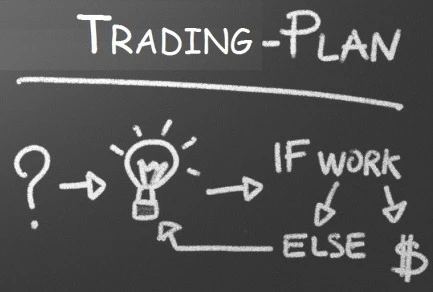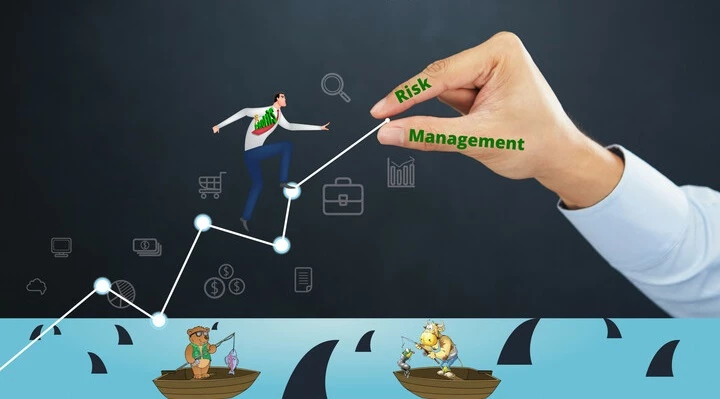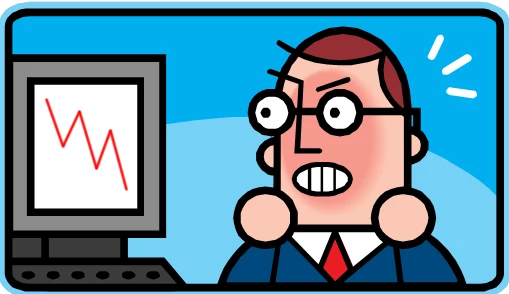Forex trading offers a world of opportunities for investors, but it also comes with its fair share of challenges. Recognizing and avoiding common mistakes is crucial for anyone looking to succeed in the forex market. These errors can range from poor risk management to emotional decision-making, and they often serve as the primary obstacles between traders and their success. This article, co-authored with experts from IamForexTrader, highlights some of the most frequent mistakes forex traders make. By understanding these pitfalls, you can improve your trading strategies, make more informed decisions, and, ultimately, enhance your chances of achieving consistent profitability in the forex market. Whether you’re a novice just starting or an experienced trader looking to refine your approach, this guide, developed in collaboration with IamForexTrader, provides valuable insights to help you navigate the complexities of forex trading with greater confidence and control.
Mistake 1: Neglecting a Trading Plan

A trading plan is a comprehensive blueprint that outlines a trader’s strategy, objectives, risk tolerance, and decision-making criteria. It serves as a roadmap for when and how to enter or exit trades, how much capital to allocate to positions, and how to manage risks and rewards. It’s the foundation upon which disciplined and consistent trading is built.
The Consequences of Trading Without a Plan
Trading without a plan is akin to sailing without a compass; it leaves you vulnerable to the whims of the market and your emotions. Without clear guidelines, traders often make impulsive decisions, chase losses, or exit profitable trades too early. This lack of structure can lead to inconsistent performance, unnecessary stress, and significant financial losses. Moreover, without a plan, evaluating your trading performance and learning from your mistakes is challenging, as you have no baseline or criteria for comparison.
Tips on How to Develop and Stick to a Trading Plan
- Define Your Trading Goals: Start by setting clear, achievable goals. Are you trading for long-term wealth, supplemental income, or as a full-time professional? Your goals will guide the development of your plan.
- Determine Your Risk Tolerance: Assess how much risk you will take on each trade and overall. This will help you decide on appropriate stop-loss orders and position sizes.
- Develop Your Trading Strategy: Choose a strategy that suits your personality, goals, and risk tolerance. Whether it’s day trading, swing trading, or another approach, your plan should include specific criteria for entering and exiting trades.
- Use Risk Management Techniques: Incorporate risk management rules to protect your capital. This includes setting stop-loss orders, only risking a small percentage of your account on a single trade, and diversifying your investments.
- Keep a Trading Journal: Documenting your trades, including the rationale behind your decisions and their outcomes, can provide valuable insights. Reviewing your journal regularly can help you stick to your plan and identify areas for improvement.
- Review and Adjust Your Plan Regularly: The forex market is dynamic, and your trading plan should be. Regularly review your plan to ensure it aligns with your goals and market conditions. Be willing to adjust as needed, but based on thoughtful analysis, not impulsive reactions.
Developing and adhering to a trading plan requires discipline and patience, but the effort is worth the reward. A solid trading plan helps you navigate the forex market more effectively and enhances your overall trading discipline, leading to more consistent and profitable outcomes.
Mistake 2: Overleveraging

Leverage in forex trading is a powerful tool that allows traders to control prominent positions with relatively little capital. It’s essentially a loan the broker provides that amplifies the trading size. For example, with a leverage ratio of 100:1, you can control a position of $100,000 with just $1,000 of your capital. While leverage can significantly increase the profit potential, it also amplifies the risk of loss, making it a double-edged sword.
The Risks Associated with Overleveraging
Overleveraging occurs when a trader uses excessive leverage, exposing themselves to a high level of risk that can quickly lead to substantial losses, especially in the volatile forex market. The primary risk of overleveraging can result in a margin call, where the broker demands additional funds to keep the positions open. The positions may be closed at a loss if these funds are not provided. Overleveraging can also tempt traders to make larger trades than their capital and risk management strategies would typically allow, potentially leading to reckless trading decisions.
Strategies for Using Leverage Wisely
- Understand Leverage: Before using leverage, ensure you fully understand how it works and the risks involved. Remember, leverage should enhance your trading, not lead to unnecessary risk.
- Use Lower Leverage Ratios: Start with lower leverage ratios to reduce risk, especially if you’re a beginner. As you gain experience and confidence, you can adjust your leverage use according to your risk tolerance and trading strategy.
- Implement Strict Risk Management Rules: Determine the maximum percentage of your capital you will risk on a single trade and stick to it. A standard guideline is to risk no more than 1-2% of your account balance on any one trade.
- Set Stop-Loss Orders: Always use stop-loss orders to limit potential losses. This is crucial when trading with leverage, as it can help prevent significant, unexpected losses.
- Monitor Your Positions: Keep an eye on your open positions and be prepared to act quickly if the market moves against you. Remember, with leverage, both gains and losses can accumulate rapidly.
- Educate Yourself Continuously: The forex market is constantly evolving, and so should your knowledge and skills. Stay informed about market conditions and leverage practices to refine your strategies over time.
Using leverage wisely in forex trading involves a careful balance between maximizing potential returns and minimizing risk. By understanding leverage, employing prudent risk management strategies, and continuously educating yourself, you can use leverage to your advantage without falling into the trap of overleveraging.
Mistake 3: Failing to Manage Risk

Risk management is the cornerstone of successful trading. It involves identifying, assessing, and prioritizing risks, followed by the coordinated and economical application of resources to minimize, monitor, and control the probability or impact of unfortunate events. Effective risk management ensures that traders can survive the ups and downs of the market and remain in the game over the long term.
The Importance of Risk Management in Trading
The forex market offers substantial profit opportunities with its high liquidity and significant leverage. However, these opportunities come with a risk that can be devastating if not properly managed. Risk management is crucial because it helps traders preserve their capital and sustain their ability to trade. Even the most skilled traders can experience losses, and how they manage those losses determines their success in the forex market.
Common Risk Management Mistakes
- Not Setting Stop-Loss Orders: One of the most common mistakes is not using stop-loss orders or setting them too wide, exposing traders to unnecessary risk.
- Overleveraging: Too much leverage can amplify losses, especially if the market moves against a trader’s position.
- Ignoring Market Conditions: Failing to adjust trading strategies and risk management practices in response to changing market conditions can lead to significant losses.
- Risking Too Much on a Single Trade: Risking a large portion of capital on a single trade can lead to significant account drawdowns from which it is difficult to recover.
- Lack of Diversification: Putting all eggs in one basket by not diversifying trading strategies or currency pairs can increase risk.
Practical Risk Management Techniques
- Use Stop-Loss Orders: Always use stop-loss orders to limit potential losses. Determine the stop-loss level before entering the trade and stick to it.
- Adopt a Conservative Leverage Ratio: Use leverage wisely. Just because high leverage is available doesn’t mean you should use it. A conservative approach can protect you from significant losses.
- Risk a Small Percentage of Your Capital: Do not risk more than 1-2% of your trading capital on a single trade. This helps ensure that no single loss can significantly impact your account.
- Adjust to Market Conditions: Flexibly with your trading and risk management strategies. Market volatility and conditions can change rapidly, and your approach should evolve accordingly.
- Diversify Your Trades: Don’t concentrate all your capital in a single currency pair or trade. Diversifying can help spread risk and reduce the impact of a bad trade.
- Use a Risk-Reward Ratio: Aim for trades where the potential reward justifies the risk. A standard risk-reward ratio is 1:3, meaning you potentially risk $1 to make $3.
Effective risk management is not about eliminating risk but managing it to position you to achieve your trading objectives while protecting your capital. By understanding and applying these risk management techniques, traders can improve their resilience to market fluctuations and enhance their overall trading performance.
Mistake 4: Letting Emotions Drive Trading Decisions

Emotions are an integral part of human nature, but when it comes to forex trading, allowing emotions like greed and fear to drive decisions can be detrimental to success. Emotional trading often leads to irrational decision-making, which can negatively impact trading performance.
How Emotions Like Greed and Fear Affect Trading Decisions
Greed and fear are the most potent emotions traders must contend with. Greed can lead to holding onto winning positions for too long, hoping to squeeze out extra profits, often resulting in lost gains when the market reverses. Conversely, fear can cause traders to exit positions too early or deter them from taking good trades altogether due to the fear of loss. Both emotions can cloud judgment, leading to missed opportunities and unnecessary losses.
The Impact of Emotional Trading on Performance
Emotional trading can sabotage a trader’s performance in several ways. It can lead to overtrading, where the trader takes too many trades without proper analysis to recover losses or capitalize on perceived opportunities. Emotional trading can also result in ignoring or deviating from the trading plan, as traders let their emotions override their strategies and risk management rules. This behavior often leads to increased losses and decreased profitability.
Tips for Maintaining Emotional Discipline and Making Rational Decisions
- Stick to Your Trading Plan: Having a well-defined trading plan and sticking to it can help keep emotions in check. The plan should include your strategy, entry and exit rules, and risk management guidelines.
- Set Realistic Expectations: Understand that losses are part of trading and set realistic expectations for your trading outcomes. This mindset can help mitigate the impact of negative emotions when trades don’t go as planned.
- Use Stop-Loss Orders: Setting stop-loss orders for every trade can help manage fear and greed by automatically closing out positions at predetermined levels, thus preventing emotional decision-making in the heat of the moment.
- Practice Mindfulness and Emotional Awareness: Being aware of your emotional state and practicing mindfulness can help you recognize when emotions are starting to influence your trading decisions. Taking a break or stepping back from trading when emotions run high can prevent rash decisions.
- Keep a Trading Journal: Documenting your trades, including the emotional state during decision-making, can help identify patterns where emotions may influence your trading. Over time, this awareness can help you develop strategies to minimize emotional impact.
- Focus on the Process, Not Just Profits: Concentrate on executing your trading plan flawlessly rather than just on the profits or losses. This focus can help reduce the emotional highs and lows associated with trading outcomes.
Maintaining emotional discipline and making rational decisions are critical for long-term success in forex trading. By recognizing the influence of emotions and implementing strategies to manage them, traders can improve their decision-making process and enhance their overall trading performance.
Mistake 5: Overtrading
Overtrading is a common pitfall many traders, especially novices, fall into. It involves trading excessively, beyond one’s strategy or financial means, often driven by emotion rather than rational decision-making. Overtrading can manifest in various forms, such as taking too many positions simultaneously, trading with excessive volume, or constantly jumping in and out of the market without a clear strategy.
Signs of Overtrading
- Frequent Trading: Entering and exiting trades more often than your trading plan dictates.
- Ignoring Strategy: Making trades that do not align with your established trading strategy or criteria.
- Increased Transaction Costs: Accumulating higher transaction fees and spreads due to the volume of trades.
- Emotional Exhaustion: Feeling stressed, anxious, or tired from constant monitoring and decision-making.
The Negative Effects of Overtrading on a Trader’s Portfolio and Mental Health
- Portfolio Impact: Overtrading can lead to diminished returns due to the erosion of capital from transaction costs and potential losses from poorly considered trades. It can also increase the risk of significant financial loss, as managing multiple positions simultaneously can lead to oversight and error.
- Mental Health Impact: Managing numerous trades, especially losing ones, can affect a trader’s mental health. It can lead to decision fatigue, increased anxiety, and a loss of confidence in trading decisions, further exacerbating the cycle of overtrading.
Strategies to Avoid Overtrading and Stay Focused on Quality Trades
- Adhere to Your Trading Plan: Your trading plan should outline how many trades you intend to make over a certain period and under what conditions. Stick to this plan rigorously to avoid impulsive decisions.
- Set Daily or Weekly Trade Limits: Establish a cap on the number of trades you’ll execute within a given timeframe to help maintain discipline.
- Implement a Checklist: Before executing any trade, complete a checklist that confirms the trade meets all your strategic criteria if it doesn’t, don’t trade.
- Quality Over Quantity: Focus on making fewer, higher-quality trades that align with your strategy rather than trying to capitalize on every perceived opportunity.
- Schedule Breaks: Regular breaks away from the market can prevent burnout and help maintain a clear perspective, reducing the urge to overtrade.
- Review Your Trades: Regularly review your trades to identify any patterns of overtrading. Reflecting on the outcomes and understanding the triggers can help you adjust your approach.
- Use Technology Wisely: Set alerts for your target entry and exit points instead of constantly watching the market. This approach can help reduce the temptation to trade impulsively.
- Practice Mindfulness and Stress Management: Techniques such as meditation, exercise, or engaging in hobbies can help manage the stress and emotional highs and lows associated with trading, reducing the likelihood of overtrading.
By recognizing the signs of overtrading and implementing strategies to combat it, traders can protect their portfolios and mental health, ultimately becoming more disciplined and successful in their trading endeavors.
Final Thought
In the fast-paced world of forex trading, success hinges on the strategies you employ and the mistakes you avoid. We’ve explored five common pitfalls traders often encounter: neglecting a trading plan, overleveraging, failing to manage risk, letting emotions drive trading decisions, and overtrading. These mistakes can significantly hinder your trading performance and, ultimately, your profitability.
Avoiding these errors requires a disciplined approach and a commitment to continuous learning. By developing and sticking to a comprehensive trading plan, using leverage wisely, implementing robust risk management techniques, maintaining emotional discipline, and focusing on quality trades over quantity, you can enhance your trading outcomes and protect your capital.

Jasper Bruxner is a passionate and versatile blogger with a keen eye for trends and a knack for crafting engaging content. As the founder of WendyWaldman, he has established himself as a trusted resource in a diverse range of niches, including food, tech, health, travel, business, lifestyle, and news. He tends to share the latest tech news, trends, and updates with the community built around Wendywaldman. His expertise and engaging writing style have attracted a loyal following, making him a respected voice in the online community.




